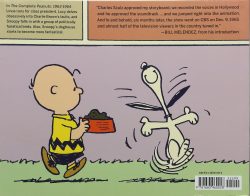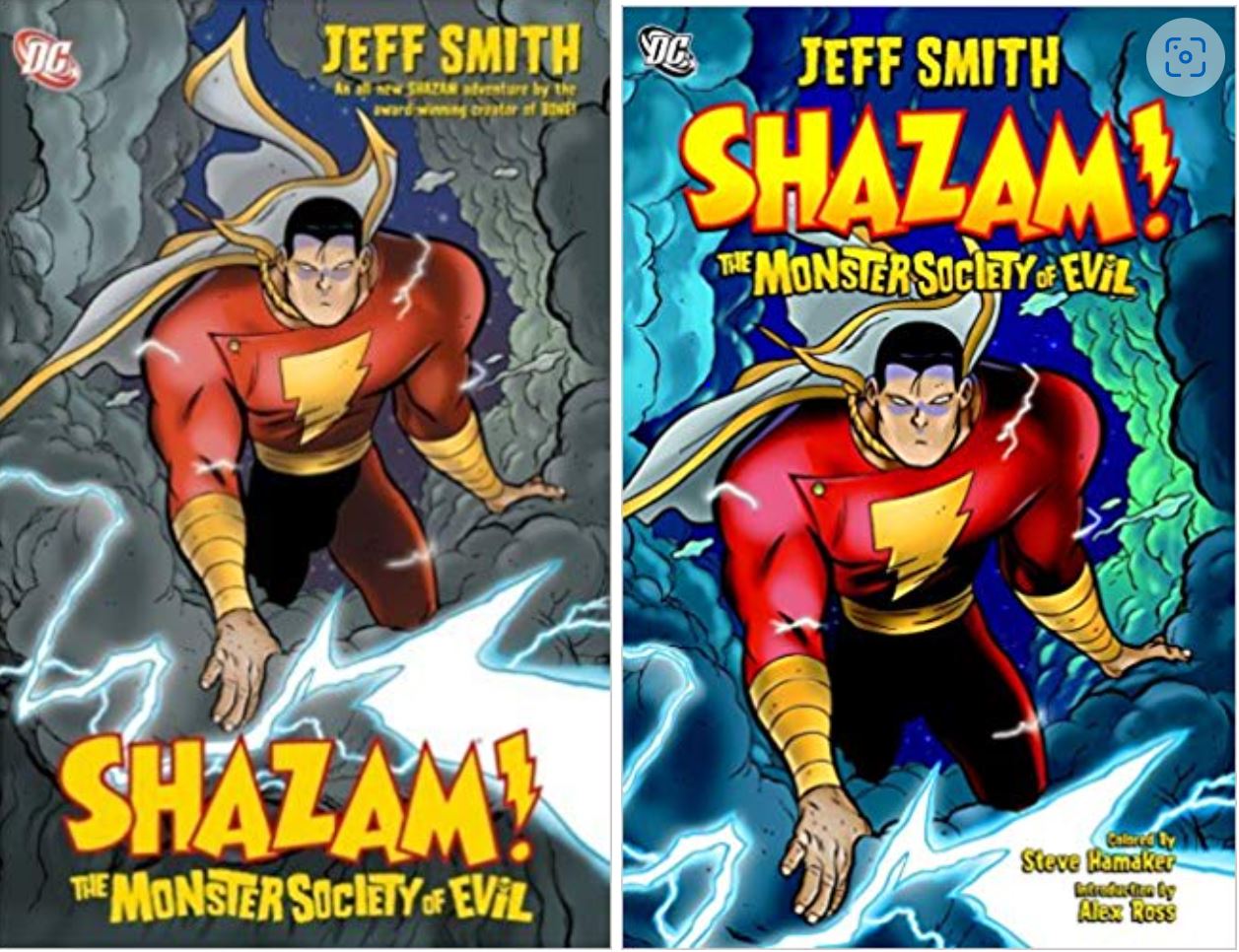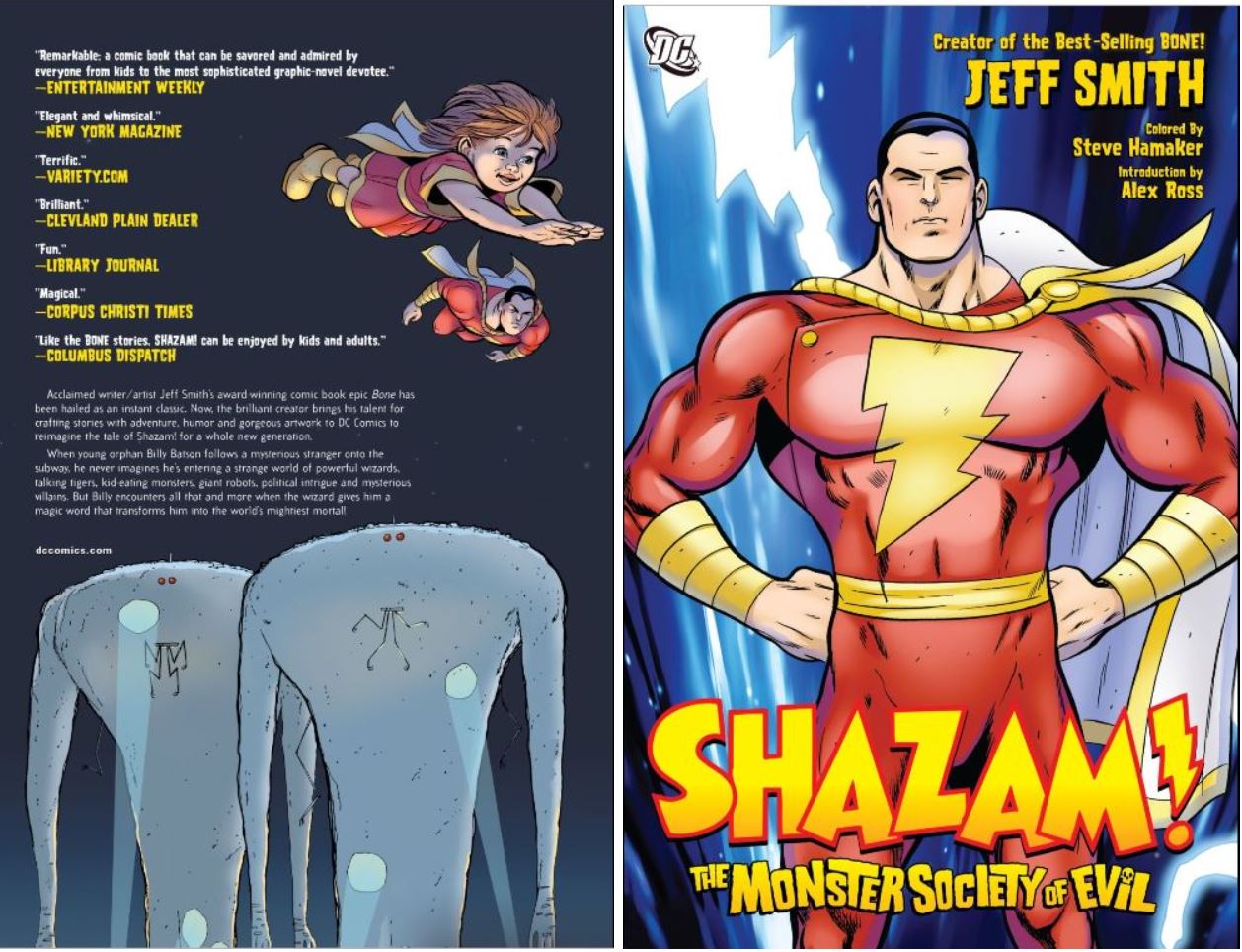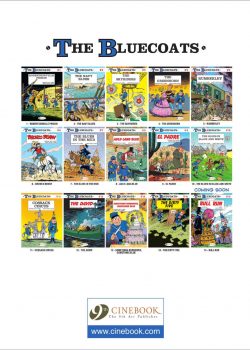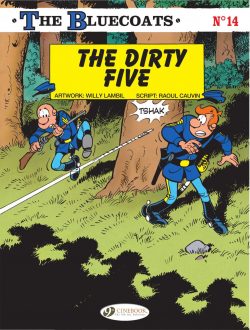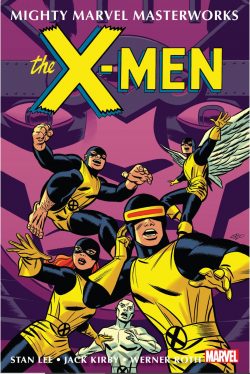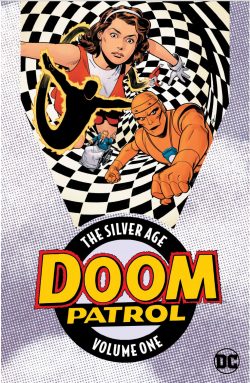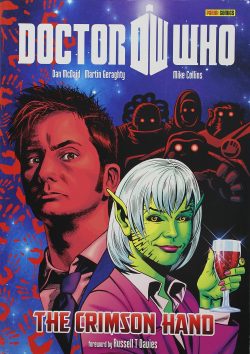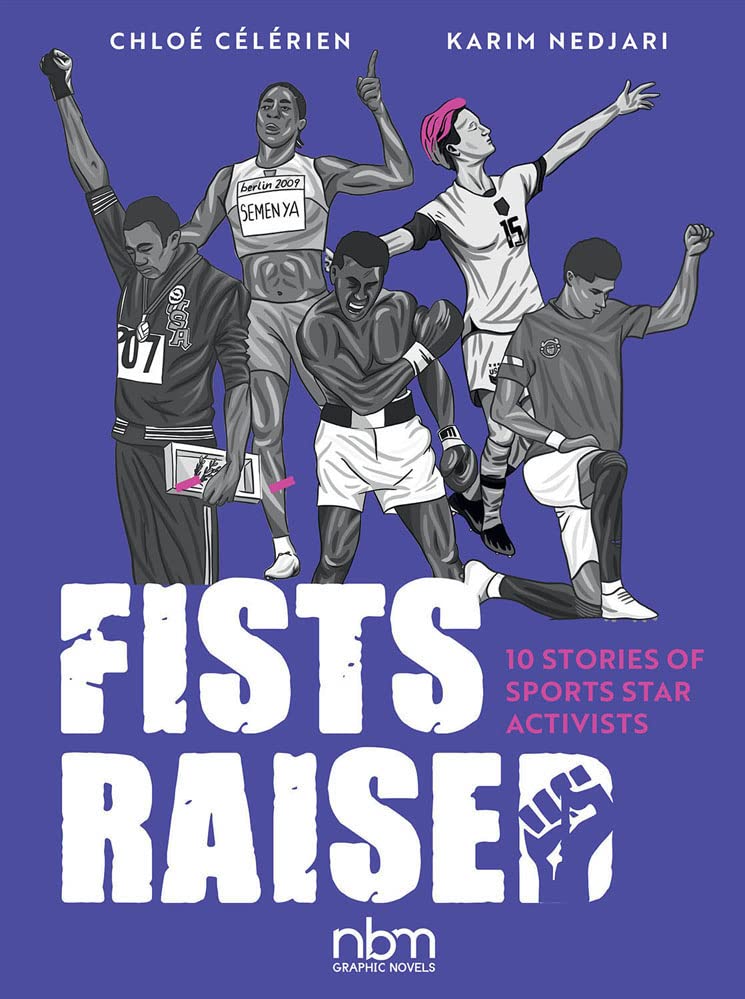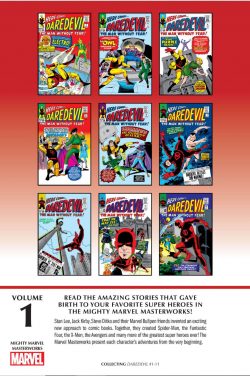
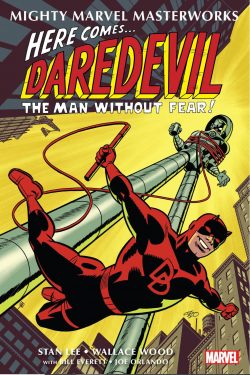
By Stan Lee, Bill Everett, Joe Orlando, Wally Wood, Bob Powell & various (MARVEL)
ISBN: 978-1-3029-3440-8 (PB/Digital edition)
As the remnants of Atlas Comics grew in popularity in the early 1960s it slowly replaced its broad variety of genre titles with more and more super-heroes. The recovering powerhouse that was to become Marvel was still hampered by a crippling distribution deal that limited the company to 16 titles (curtailing their output until 1968), so each new untried book would have to fill the revenue-generating slot (however small) of an existing title.
Moreover, as costumed characters were selling, each new similarly-themed title would limit the breadth of the monster, western, war, humour or girls’ comics that had been the outfit’s recent bread and butter. It was putting a lot of eggs in one basket, and superheroes had failed twice before for Stan Lee.
So in retrospect the visual variety of the first few issues of Daredevil, the Man Without Fear seemed a risky venture indeed. Yes, the artists were all talented, seasoned veterans, but not to the young kids who were the audience. Most importantly, they just weren’t Jack Kirby or Steve Ditko, and new features need consistency and continuity…
Still, Lee and his rotating line-up of artists plugged on, concocting some extremely engaging tales until the latest Marvel Sensation found his feet, and the fascinating transition of moody masked avenger to wisecracking Scarlet Swashbuckler can be enjoyed in this collection gathering the first 11 issues (spanning April 1964 to December 1965): an effervescent package of thrills and spills which begins with ‘The Origin of Daredevil’
This much-retold tale recounts how young Matthew Murdock grew up in the slums of New York City, raised alone by his father: washed-up second-rate prize-fighter Battling Jack Murdock.
Determined that his boy will be something, the father extracts a solemn promise from Matt that he will never fight. Mocked by other kids who sarcastically dub him “Daredevil”, the kid abides by his vow, but secretly trains his body to physical perfection.
One day, he saves a blind man from being hit by a speeding truck, only to be struck in the face by its radioactive cargo. His sight is burned away forever, but his other senses are super-humanly enhanced and he gains a sixth, “radar-sense”.
He tells no-one, not even his dad.
The senior Murdock is in dire straits. As his career declined, he signed with The Fixer, knowing full well what the corrupt promoter expected from his fighters. Somehow, the pug’s star started to shine again and his downward spiral reversed itself. Unaware that he was being set up, Battlin’ Jack got a shot at the Big Time, but when ordered to take a dive, he refused. Winning was the proudest moment of his life. When his bullet-riddled corpse was found, the cops had suspicions but no proof…
Heartbroken, Matt graduated college with a law degree and set up in business with his room-mate Franklin “Fogg” Nelson. They hired a quiet young secretary named Karen Page and, with his life on track, young Matt now had time to solve his father’s murder…
His promise stopped him from fighting, but what if Matt became “someone else”?
Scripted by Lee and moodily illustrated by the legendary Bill Everett (with the assistance of Ditko), this is a rather formulaic and nonsensical yarn but is astonishingly engaging visually. The oft-told tale looked a little dated even at the time, but hinted at magic yet to come…
Plot-wise, the second issue fares little better as Joe Orlando & Vince Colletta assume the art chores for ‘The Evil Menace of Electro!’: a saga wisely exploiting the celebrity of guest-stars The Fantastic Four and featuring a second-hand Spider-Man villain.
The FF consult lawyer Matt Murdock just as the electrical outlaw tries to break into their building and before long Daredevil is spectacularly and relentlessly dealing with the voltaic villain. DD #3 finally offers the sightless swashbuckler a super-foe of his own when he meets and trounces crooked corporate raider ‘The Owl, Ominous Overlord of Crime!’
Daredevil #4 was a turning point, and possibly just in time. ‘Killgrave, the Unbelievable Purple Man!’ finally gave some distinctive character to the big stiff as he strove to overcome a villain who could exert total control over anyone who saw him. Although Orlando & Colletta’s uncomfortable, sedate and over-fussy illustration remained for one last episode, Lee finally got a handle on the hero; just in time for a magician-in-waiting to elevate the series to spectacular heights.
With #5, Wally Wood assumed the art chores and his lush, lavish work brought power, grace and beauty to the series. At last the costumed combat acrobat seemed to spring and dance across the rooftops and pages. Wood’s contribution to the plotting didn’t hurt either. He actually got a cover plug on his first issue.
In ‘The Mysterious Masked Matador!’ a cool, no-nonsense hero who looked commanding and could handle anything started fighting hard and fast. The series began advancing the moribund romantic sub-plot – Foggy adores Karen, who only has eyes for Matt, who loves her, but won’t let her “waste” her life on a blind man – and actually started making sense and progress.
Most importantly, the action scenes were intoxicating…
Although a bullfighter who used his skills for crime is frankly daft, the sublime drawing and sleek inking makes it all utterly convincing, and breathtakingly battle sequence is augmented by a Wood ‘Marvel Masterwork Pin-up of “DD”’ signalling a grand change in fortune…
The wonderment intensified in the following issue as the bold bravo was ‘Trapped by the Fellowship of Fear!’: a minor classic as the Man Without Fear must defeat not only the super-powered Ox and Eel (two more recycled villains) but also his own threat-specific foe Mr. Fear – who could instil terror and panic in victims, courtesy of his ghastly gas gun.
The improvements led to a major change in Daredevil #7: a true landmark and to my mind one of the Top Ten Marvel Tales of all time.
Here Lee & Wood concocted an indisputable masterpiece as ‘In Mortal Combat with… Sub-Mariner!’ sees Prince Namor of Atlantis travel to the surface world to have his day in court. Resolved to sue all Mankind, he hires Nelson & Murdock and submits to being arrested, but discovers too late that his warlord Krang has usurped the throne in his absence. The tempestuous monarch will not languish in a cell when the kingdom is threatened, so he fights his way to freedom and the sea.
This saga shows Murdock the lawyer to be a brilliant orator, whilst his hopelessly one-sided battle against one of the strongest beings on the planet shows the dauntless courage of DD and true nobility of the Sub-Mariner.
Most notably, and with no fanfare at all, Wood replaced the original yellow-&-black “wrestler’s costume” with the iconic and beautiful all-red outfit we know today. As one pithy commentator stated, “the original costume looked as if it had been designed by a blind man”…
Augmented by another pin-up – in actuality a rejected cover for the tale – this issue proved beyond doubt the potential of Daredevil and promised even better to come…
Another all-new villain debuted in #8; a gripping industrial espionage thriller, ‘The Stiltman Cometh!’ pits the ace acrobat against a thieving, murderous masked miscreant towering above the skyscrapers, after which Golden Age Great Bob Powell came aboard as penciller to Wood’s layouts and inks with #9’s ‘That He May See!’…
Relentlessly badgered by Karen, Matt finally agrees to see an eye-specialist who might cure his blindness, but his visit to the European principality of Lictenbad quickly embroils the adventurer in a plot to conquer the world by a Ruritanian maniac with twin knights-in-armour and killer robot fixations…
Wood was clearly chafing after a year on the book and looking to stretch himself. Thus he also scripted the series’ first continued story ‘While the City Sleeps!’: a sophisticated political thriller and complex crime caper which first saw Foggy run for District Attorney of New York, even as a mysterious mastermind known as The Organizer created an animal-powered gang comprising Bird-Man, Frog-Man, Cat-Man and Ape-Man to terrorise the city.
With Powell now on layouts and pencils with Wood as finisher, Lee was left to dialogue the concluding chapter (which also proudly proclaimed the title’s advancement to a monthly schedule) ‘A Time to Unmask!’ as Daredevil pulled out all the stops to confound a devious power-grab scheme which saw the villains defeated, but only at great personal cost to Nelson & Murdock…
Offering covers from Everett, Jack Kirby, Colletta, Wood and Powell and closing with a rousing house ad by Wood, this sleek, economical, kid-friendly Mighty Marvel Masterworks compendium offers a few bumpy false starts before blossoming into a truly magnificent example of Marvel’s miraculously compelling formula for success: smart stories, human characters and magnificent illustration.
If you’ve not read these tales before I strongly urge you to rectify that error as soon as superhumanly possible…
© 2022 MARVEL.


